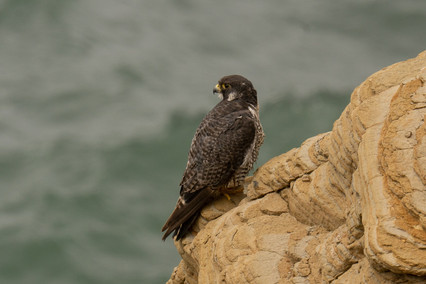All things Birds of Prey in ID, WA and OR
- Alison Udall
- Jul 20, 2021
- 5 min read
Updated: May 19, 2023
I'm really enjoying identifying and learning more about these incredible birds. Since I'm doing more photography now I'm also much more aware of them and thought it would be fun to do a blogpost with cool info and pictures I've taken in ID, WA and OR.

Did you know?
Raptor is a generic term for all birds of prey. Raptors are carnivorous birds with strong bills, large talons, and exceptional flight capabilities. There are more than 500 species of raptors found throughout the world, and different types of raptors can be found in every type of habitat. From frozen tundras and scorching deserts to dense forests and bustling cities, raptors are key apex predators in every environment.

Here's some interesting facts I've learned:
Birds of prey, also known as raptors, include species of bird that primarily hunt and feed on vertebrates that are large relative to the hunter. Additionally, they have keen eyesight for detecting food at a distance or during flight, strong feet equipped with talons for grasping or killing prey, and powerful, curved beaks for tearing flesh.
A few of these are: owls, eagles, osprey, falcons, kites, vultures, buzzards, hawks and harriers
Raptors have acute hearing and vision, which is estimated to be eight to ten times that of humans. The ears of a raptor are an important tool in locating prey. Their ears are located behind their eyes on the edge of the facial disk and are concealed by feathers. They are vertically offset (one is higher and one is lower) to help locate the source of a sound more precisely. Raptors have a keen sense of vision, which helps them locate and track their prey. A raptor’s eyes are very large in relation to the size of their skull. But raptors are not able to move their eyes around like humans can. Instead they have extra bones in their neck which allow them to move their whole head around. Some raptors, like owls, can rotate their heads 270 degrees!
The term raptor is derived from the Latin word rapio, meaning to seize or take by force.
Here are images of an Osprey that I caught at Heyburn State Park. We saw them everyday that we were in this area flying around, diving into the water, passing overhead carrying fish and sitting on their large nests. I don't have the photography skills to capture images of them diving into the water but it's pretty amazing to see as they dive and grab fish with their incredible strong legs and claws.
As I was watching this one it moved over and made room for a second one that swooped in. Perhaps it's mate since they are typically monogamous and often mate for life.
Some cool facts about Osprey are:
Ospreys are brown above and white below, and overall they are whiter than most raptors. From below, the wings are mostly white with a prominent dark patch at the wrists. The head is white with a broad brown stripe through the eye.
To fish, an osprey flies across the water. It hovers over its prey and then dives feet first into the water to catch a fish in its large, curved talons. The bird takes its prey to a favorite perch using a hold secured by sharp spicules on the underside of the toes. Occasionally, after a meal, the osprey flies low over the sea, dragging its feet to wash them.
They are also known as the fish hawk, is a huge, long-winged bird that measures approximately 65 centimeters (26 inches) in length and lives along seacoasts and greater inland waterways, where it fishes.
They can fly 80 mph.

While we were at Riverside State Park in WA I was sitting by the river with my coffee mug and watched one swoop down catch and fish and fly right past me with it. Another time it didn't like a passing Heron and chased after it which was kind of scary to watch. They are fierce!
The most recognizable, and enormous, Bird of Prey is the Bald Eagle. I saw this gorgeous one at Cape Disappointment State Park where it flew overhead and posed for me one gorgeous evening.
Did you know ....
In flight, a Bald Eagle holds its broad wings flat like a board.
They are opportunistic; sometimes a predator, sometimes a scavenger. Does much hunting by watching from a high perch, then swooping down to catch prey in its talons. Also hunts by cruising very low over sea or land, taking prey by surprise

I also captured these images of a juvenile Bald Eagle in Whidbey Island, WA while walking on the beach.

Another cool bird is the Peregrine Falcon. The first time I saw one was when we stopped at an overlook in Oswald West State Park. I looked over to see it sitting there on the side of the cliff scanning below it.
They are the largest falcon over most of the continent, with long, pointed wings and a long tail.
Adults are blue-gray above with barred underparts and a dark head with thick sideburns. Juveniles are heavily marked, with vertical streaks instead of horizontal bars on the breast.
They are one of the world's fastest birds; in power-diving from great heights to strike prey, the Peregrine may possibly reach 200 miles per hour.
Often hunts by flying very high, then stooping in spectacular dive to strike prey out of the air. Large prey may be knocked out of the air, fed upon on the ground where it falls. Also pursues prey in level flight, after having spotted it from a perch or while flying. May fly very low over ground or sea, taking prey by surprise.
Feeds on a wide variety of birds. Pigeons are often favored prey around cities, and ducks and shorebirds often taken along coast; known to take prey as large as loons, geese, large gulls, and as small as songbirds. Also eats a few small mammals, seldom insects, rarely carrion.

I then began noticing them flying overhead as I was sitting on the beach along the Oregon Coast near Coos Bay. One day we were exploring off-shoot trails, out to see views, and caught this one in a perfect spot. It was actively watching the birds flying by below. It just almost never stopped moving it's head.

Another day we were hiking along and exploring the tide pools around Sunset Bay State Park and just saw a number of them sitting in trees and flying all around. We didn't get to see any diving to capture anything but it was amazing how many were in the area!
I can't wait to keep capturing images of these stunning birds and love seeing the detail in the images. Things that your eye just often can't see when they are passing by.
































































コメント